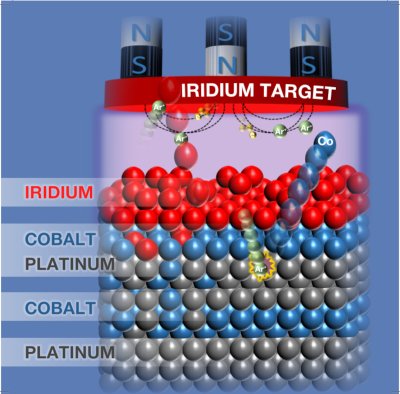A team led by researchers at the National Institute of Standards and Technology (NIST), the University of South Florida (USF), Harvey-Mudd College and the University of the District of Columbia has discovered a route toward reducing the sputter damage during growth of Nanolayered Pt/Co/Ir-based Synthetic Antiferromagnets that delivers significant improvements in perpendicular magnetic anisotropy and interlayer exchange coupling energy.
Synthetic antiferromagnets (SAFs) are a core component for top-pinned magnetic tunnel junction memory systems in semiconductor production. Establishing low-damage sputtering techniques to protect the multiple interfaces between sub-nm thick constituent layers delivers improved SAF properties could be key to data retention in high-density, sub-10 nm diameter magnetic memory arrays.
The research team in this study has examined the role of sputter damage on limiting the perpendicular magnetic anisotropy and interlayer exchange coupling in Pt/Co/Ir-based synthetic antiferromagnets, a key building block used in the microelectronics community for standalone and embedded magnetic random access memories.
By replacing the more conventional Ar process gas with Kr or Xe, they reduced the energy of backscattered sputter gas ions bombarding the substrate from in excess of 100 eV to a few 10 s of eV.
Reducing this kinetic bombardment is critical to avoid intermixing of this nanolayered functional heterostructure, with the constituent Pt, Co, and Ir layer thicknesses each below 1 nm.
The team's approach leads to a simultaneous enhancement in the perpendicular magnetic anisotropy (>2 ×106 J/m3) and interlayer exchange coupling energy (>3.5 mJ/m2). This advantageous improvement in perpendicular anisotropy and interlayer exchange coupling is evident on a 5 nm-thick Pt buffer layer and additionally on an MgO/CoFeB/Mo underlayers complex, showing that this method can improve the performance of both top- and bottom-pinned reference layers in perpendicular
magnetic tunnel junction devices.
These experimental findings may help advance the processing of conventional and synthetic
antiferromagnetic devices for emerging spintronic memory technologies.
